Yogyakarta, Indonesia
This post recounts a trip to Yogyakarta, Indonesia, in July 2009.
Yogyakarta is to Indonesia what Shiraz is to Iran. If Australia loves a barbecue and Italy invented pizza then this place is the biggest, tastiest bowl of fried rice you’ve ever tasted. Together with its twin town Solo (just 40kms away), it is an essential part of any trip to Java. Solo and Yogyakarta complement each other just like milk and coffee; Solo is more Islamic and conservative, ’Yogya’ is home to a Sultan who’s opened his own restaurant and bar downtown. Solo is a silverware and weaving centre; in Yogya you can buy just about anything. The downside to Yogyakarta’s large size is its overdevelopment; crowded and dusty, it might be cultural, but it ain’t always pretty.
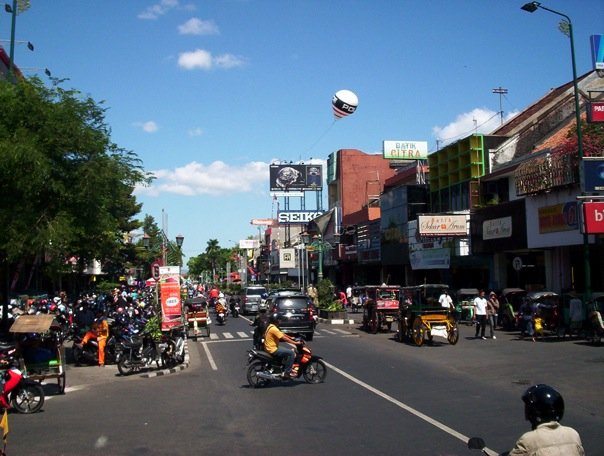
Central Yogyakarta
We decided to base ourselves at the funky “Ministry of Coffee” hotel in Yogyakarta. (This is their website: http://ministryofcoffee.com/) The comfortable Ministry of Coffee, with its attached coffee shop (of course!) was about 10 minutes walk from the centre of town. They served a delicious breakfast, yummy local coffee and deadly cakes, all to a soundtrack of Burt Bacharach. My personal highlight was finding a hotel which would do our laundry for us.
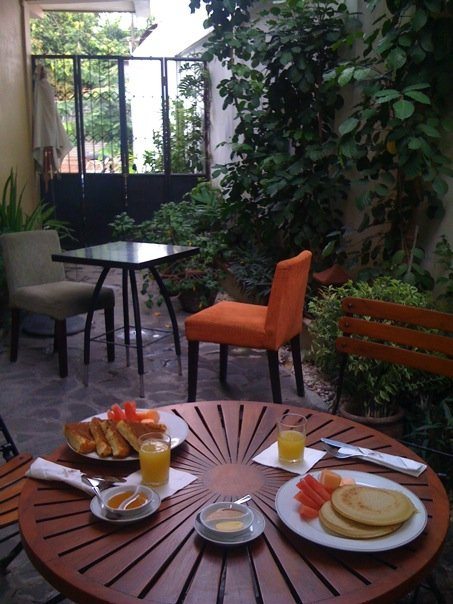
Ministry of Coffee breakfast
On Saturday we set out to explore the city, did a bit of shopping at Jalan Malioboro (Marlborough Street, named after the Duke of Marlborough) and bought some batik. Batik is a traditional Indonesian art form, native to the Yogya-Solo area, relying on bright colours splashed onto cotton or silk. We also visited a local shopping centre where we encountered a titillating take on the Hawaii chair (for the uninitiated, check this out; http://www.youtube.com/watch?
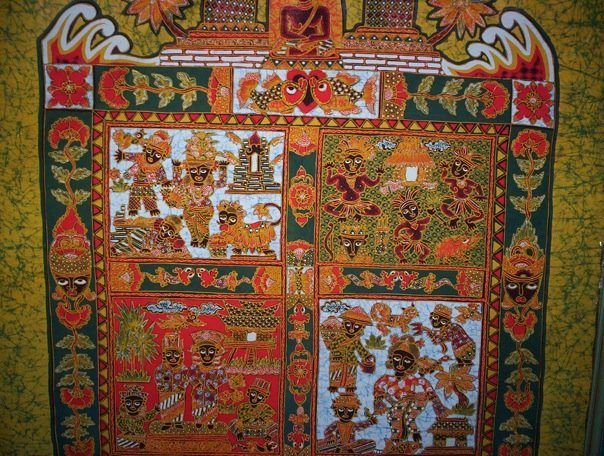
Batik prints
The streets of Yogyakarta are littered with becak. A becak (pronounced Be-chak) is a bicycle rickshaw with seating for two. Or so we thought. We squeezed our oversize Australian derrieres into the seat, and quickly discovered there is room for two Indonesians but only one and a half foreigners, and that there’s more than one way to get a hernia. We laughed all the way into the city centre as we dodged Yogyakarta‘s suicidal traffic; after all, happiness is two fat foreigners in a becak!
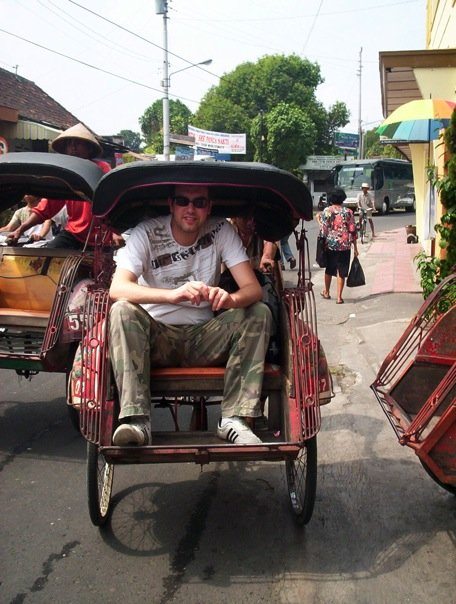
Too fat for a becak!
We visited the central mosque in Yogyakarta, notable for it’s mixture of architectural styles. After travelling in the Middle East, I could identify the basic elements of the building, although the main prayer hall was actually a vaulted ceiling with no walls to let the humidity flow out with the breeze. The women’s section was also much larger than in many mosques in the Middle East, and was incorporated in a section symmetrical to that of the men’s; the Arab nations would normally place the female mosque-goers on a balcony upstairs.
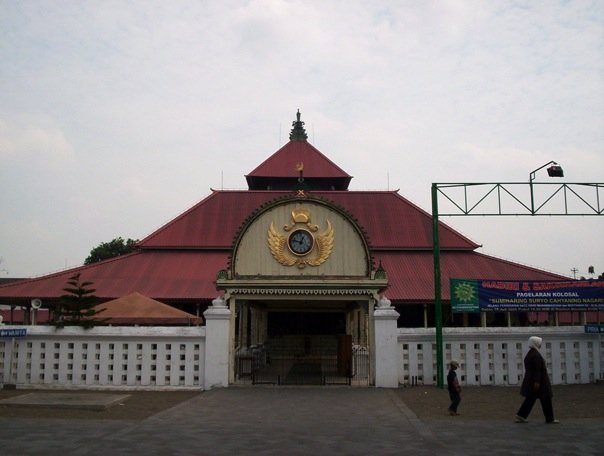
Yogyakarta’s central mosque
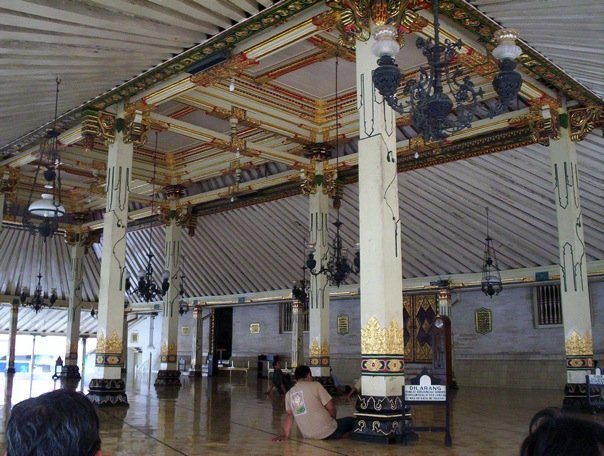
Inside Yogyakarta’s central mosque
We also visited Yogyakarta‘s Bird Market, where you can pick up some clearance stock of H5N1 Bird Flu at discounted rates (Bird Flu is so 2005; this season were going piggy!). The market was hot, humid, noisy and crowded enough for several RSPCA heart attacks. Saturday evening was spent being given a tour from a local tout who showed us an underground network of tunnels. They were built in case of invasion, and the tunnels linked the Sultan’s palace with different points throughout the city, and the main escape tunnel stretched all the way to the port, 37kms away. The escape tunnel and the Sultan’s tunnel have long since closed, but the other tunnels are still open to the public, and include an underground mosque, food storage area, hospital and water supply. The tunnels are unmarked and therefore easily missed, but our ‘guide’ took us and all we had to pay was a friendly visit to her Batik gallery.
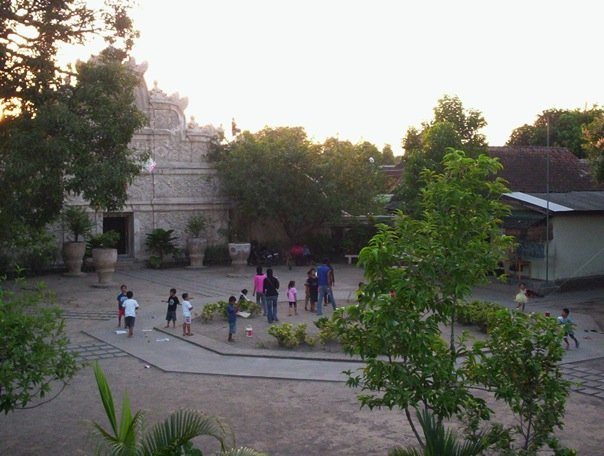
Taman Sari, part of the Sultan’s Walled City
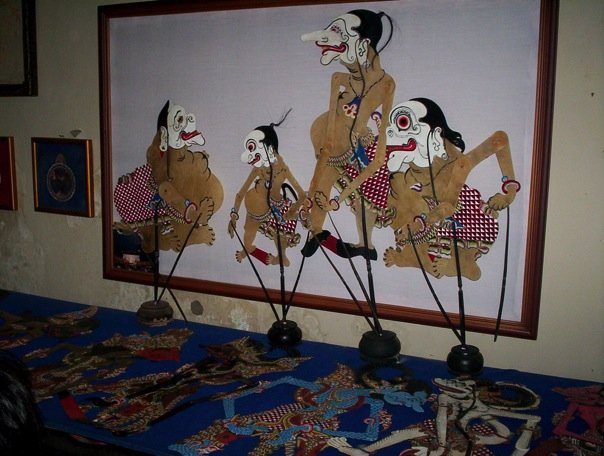
Hindu puppets
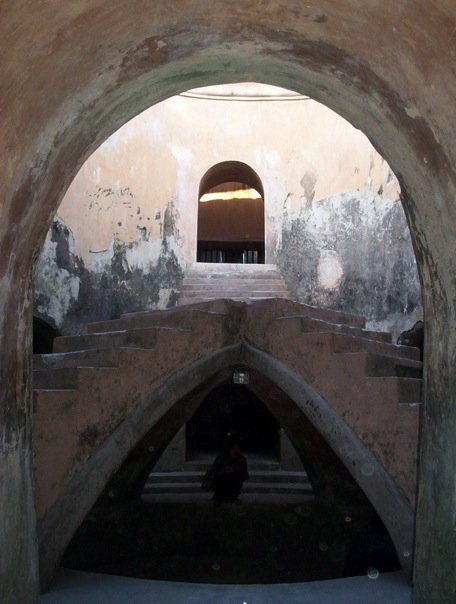
Underground mosque in Yogyakarta’s ramparts
Next week, I’ll feature Yogyakarta’s crowning glory, the ruins of Borobudur.





i think Yogyakarta sounds like a great city to visit, and it interests me a lot more than much of Indonesia. thanks for sharing!
For me, Yogyakarta was like a ‘true’ Indonesian city, away from the touristy islands. Thanks for reading 🙂
I agree for the cultural part.. Too bad the local government has make it more industrialized and capitalized by developing shopping malls and apartments..
Sad..
It is certainly a shame… I hope at least the important parts are preserved, we’ve seen what happens when development is allowed to run wild…
Hapiness is two fat foreigners in a bechak… lol that should be your website slogan or something. Really made me laugh. Great posts
Hehehehe thanks for reading, Jameela 🙂
Teehee… Made me giggle picturing you 2 ‘fat foreigners’ laughing all the way into town, and REALLY love that you stayed at a hotel called Ministry of Coffee. Brilliance. 🙂 Although your brekkie looks pretty western… Or are those pancakes loaded with spam?
Hehehhee no the breakfast was pretty western, but it was delicious all the same! (No spam in sight!!)
I think it sounds like a Java centrism if we called Yogyakarta is Indonesia’s Cultural Capital. Indonesia is a culturally diverse population, every island and province have totally different culture one another.
As a Sumatran, it sounds unfair since I don’t feel I belong to Javanese culture and I have my own culture, their culture is still alien for me abit… It’s hard to label which place as a cultural capital in Indonesia 😉
Yes, that’s a very good point actually, and one that I hadn’t considered. Thank you for mentioning it – you are certainly right that every island in Indonesia is different… and if Yogyakarta is a cultural capital of anywhere, it would be Java or central Java. It’s interesting that so many guidebooks and travellers call Yogyakarta as the ‘cultural capital’ of the nation… a bit misguiding, I guess.